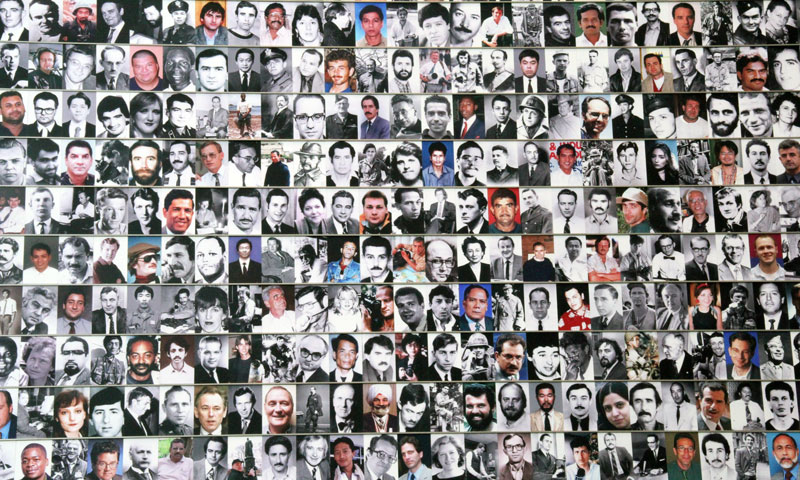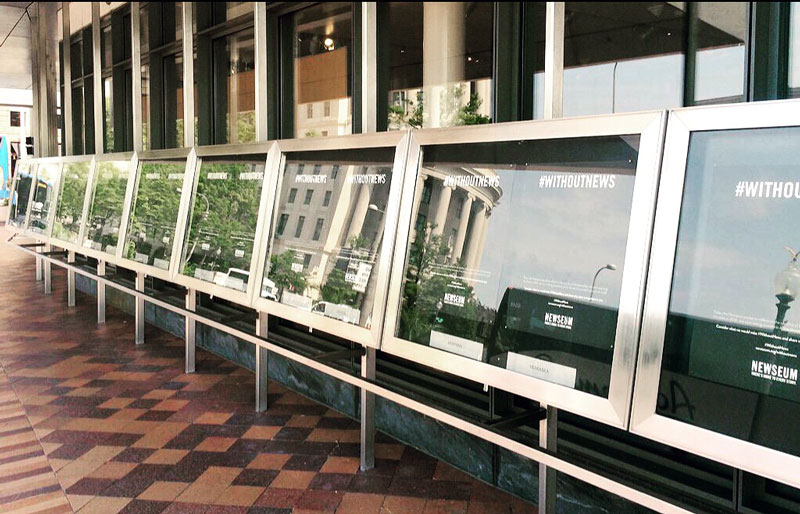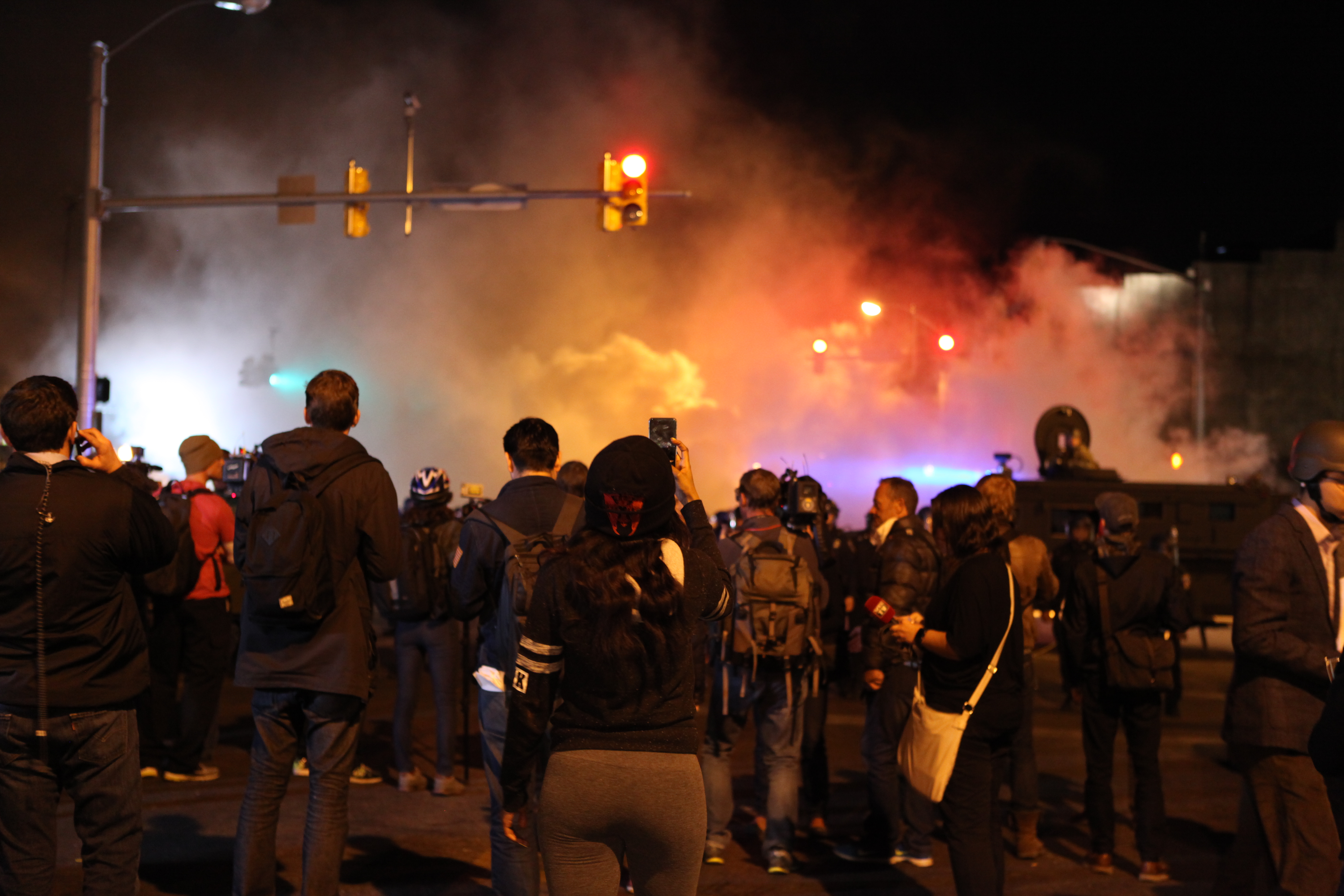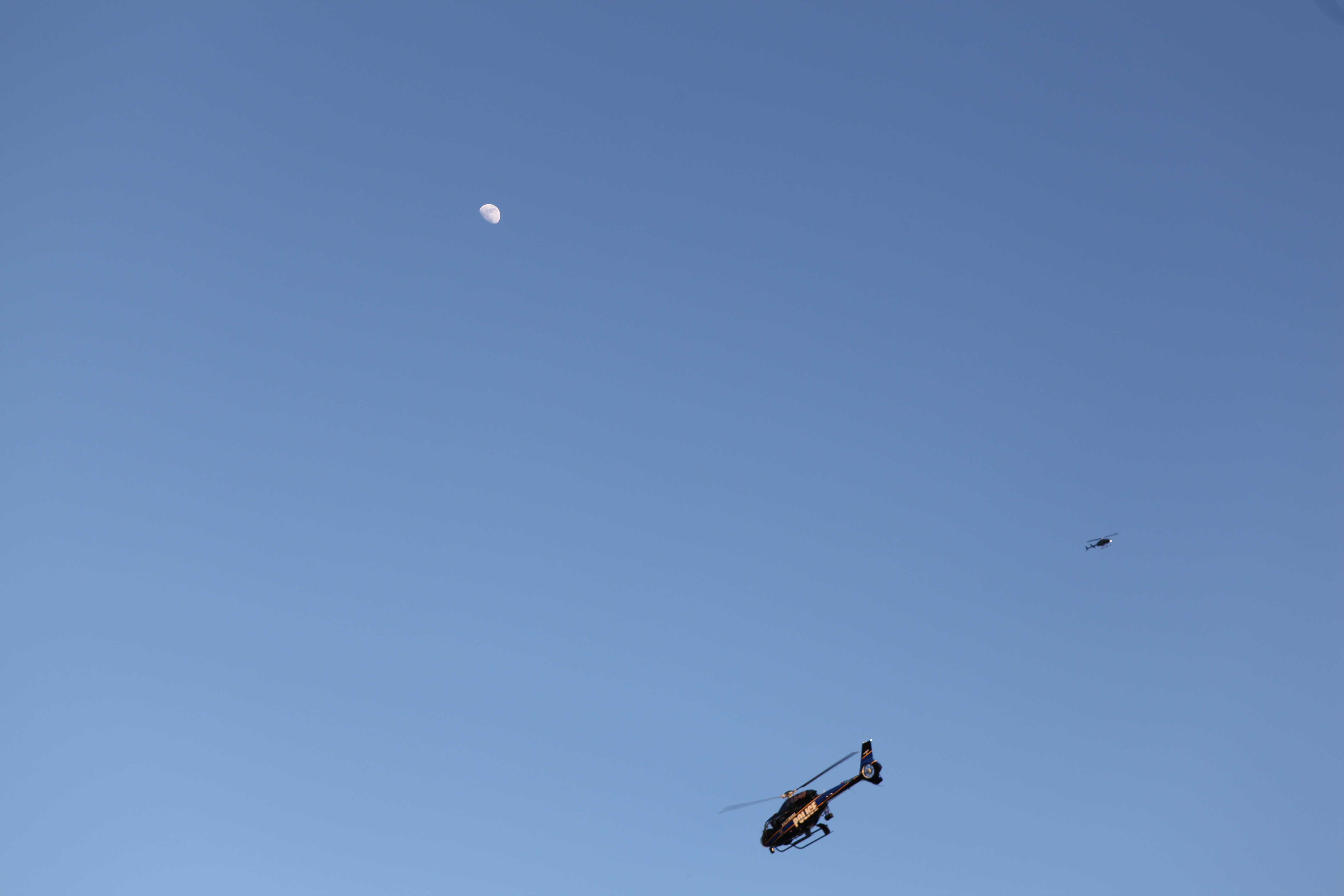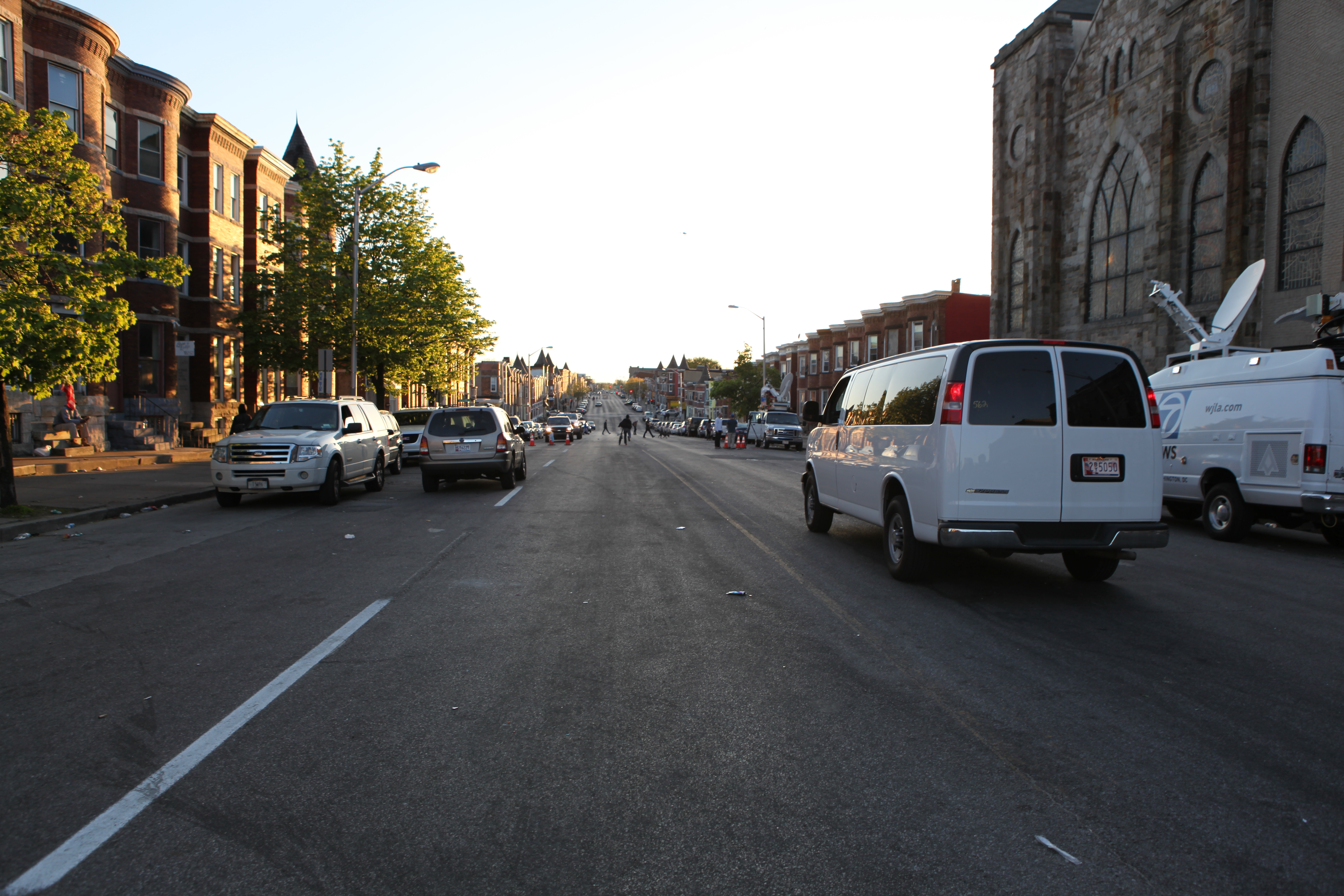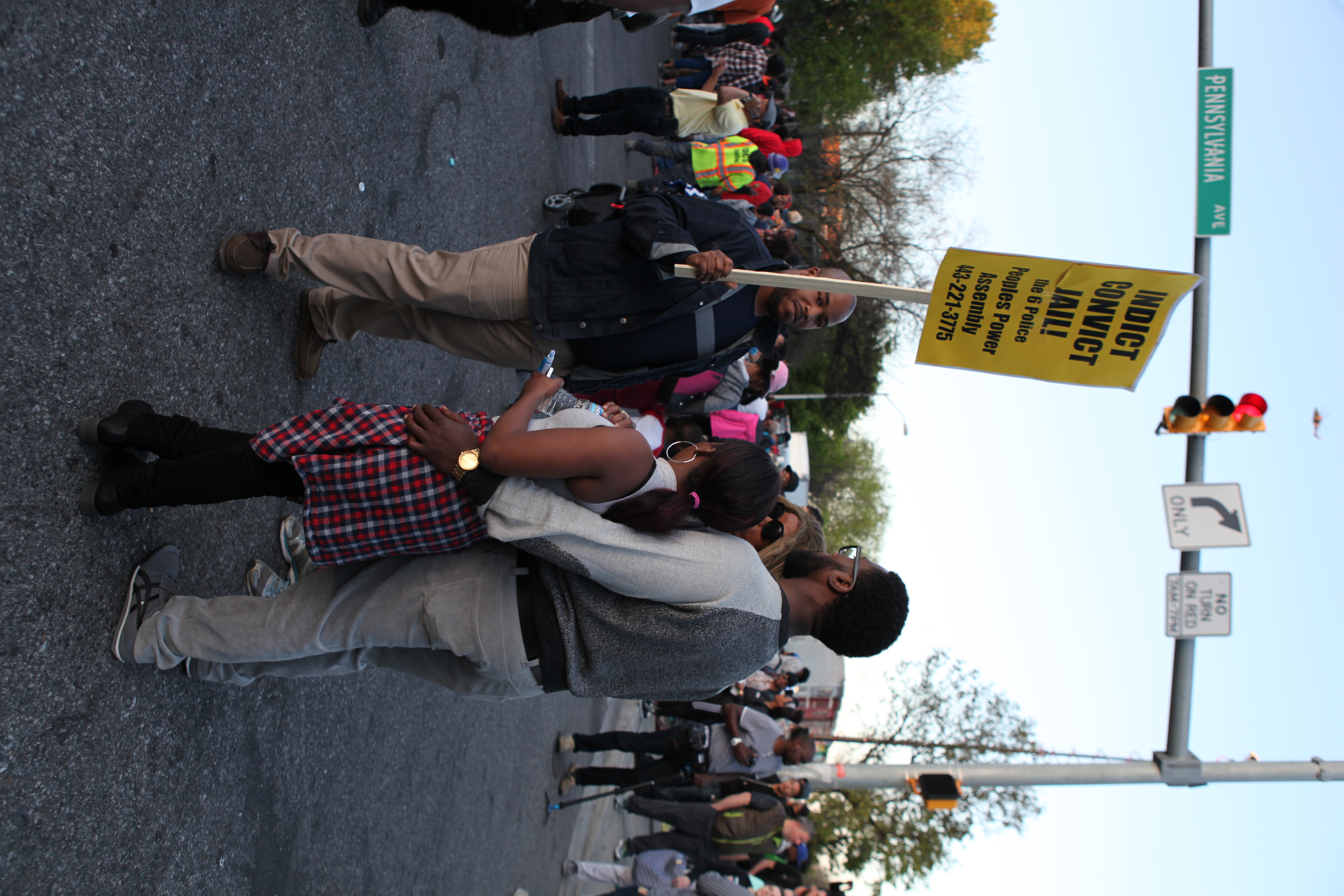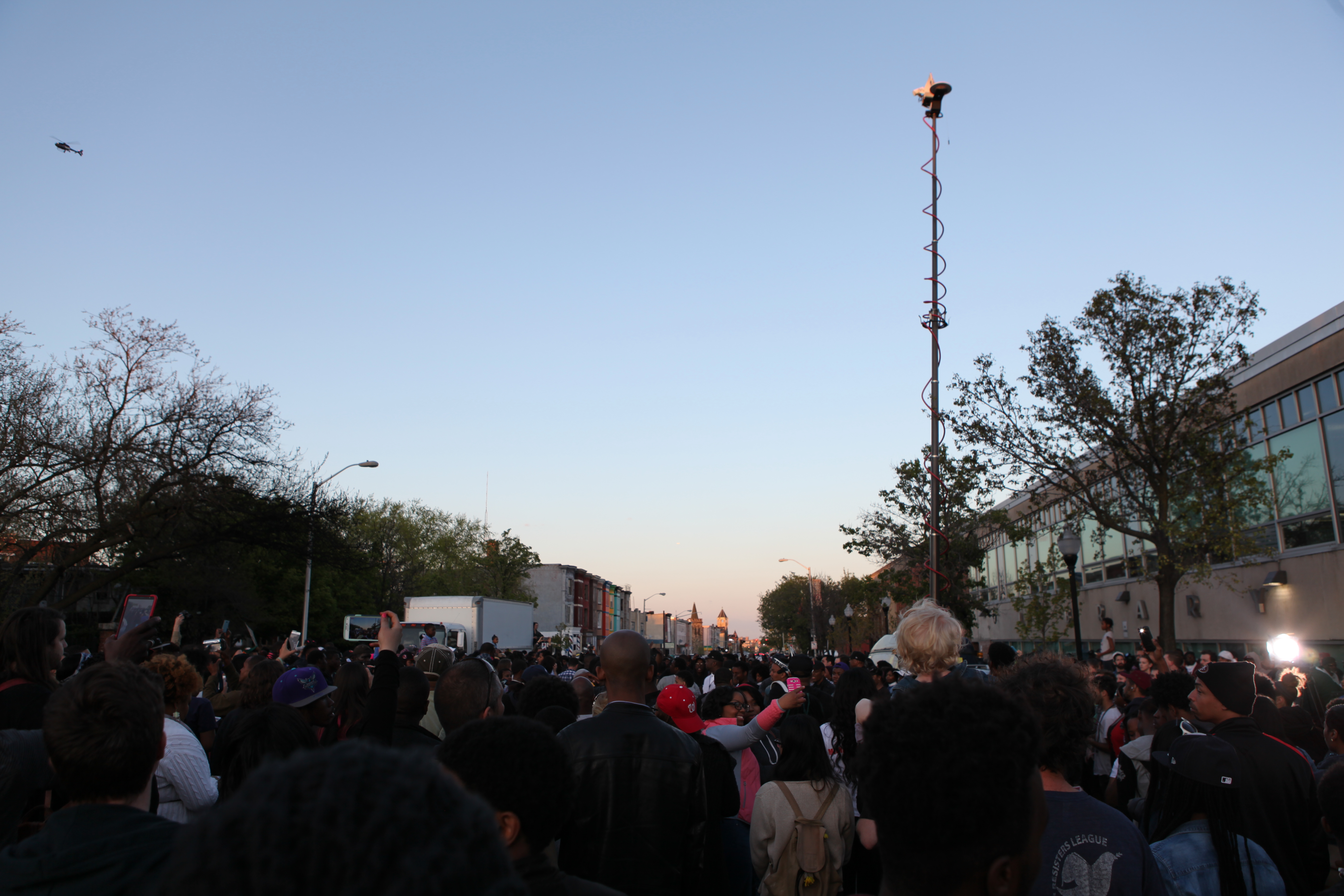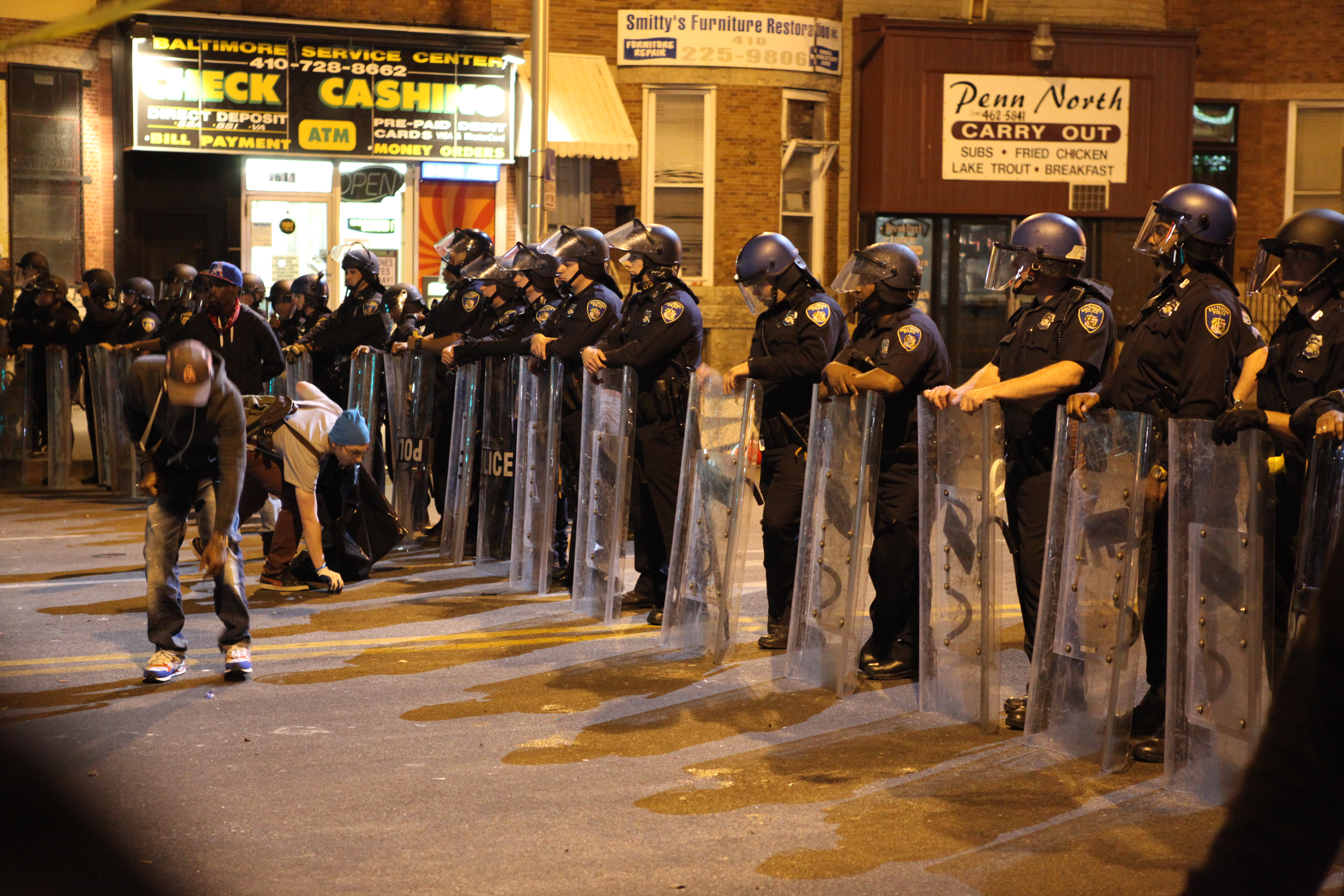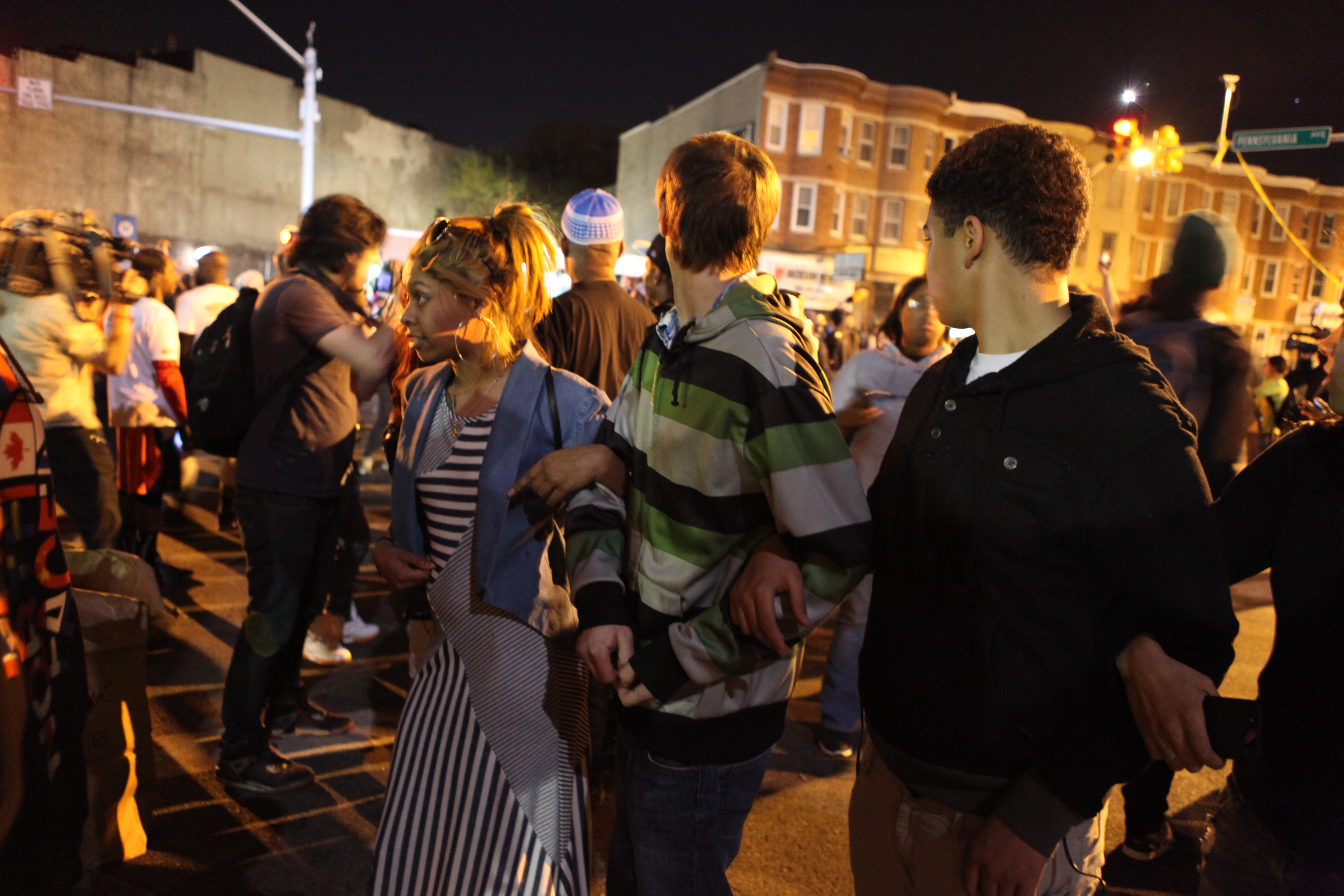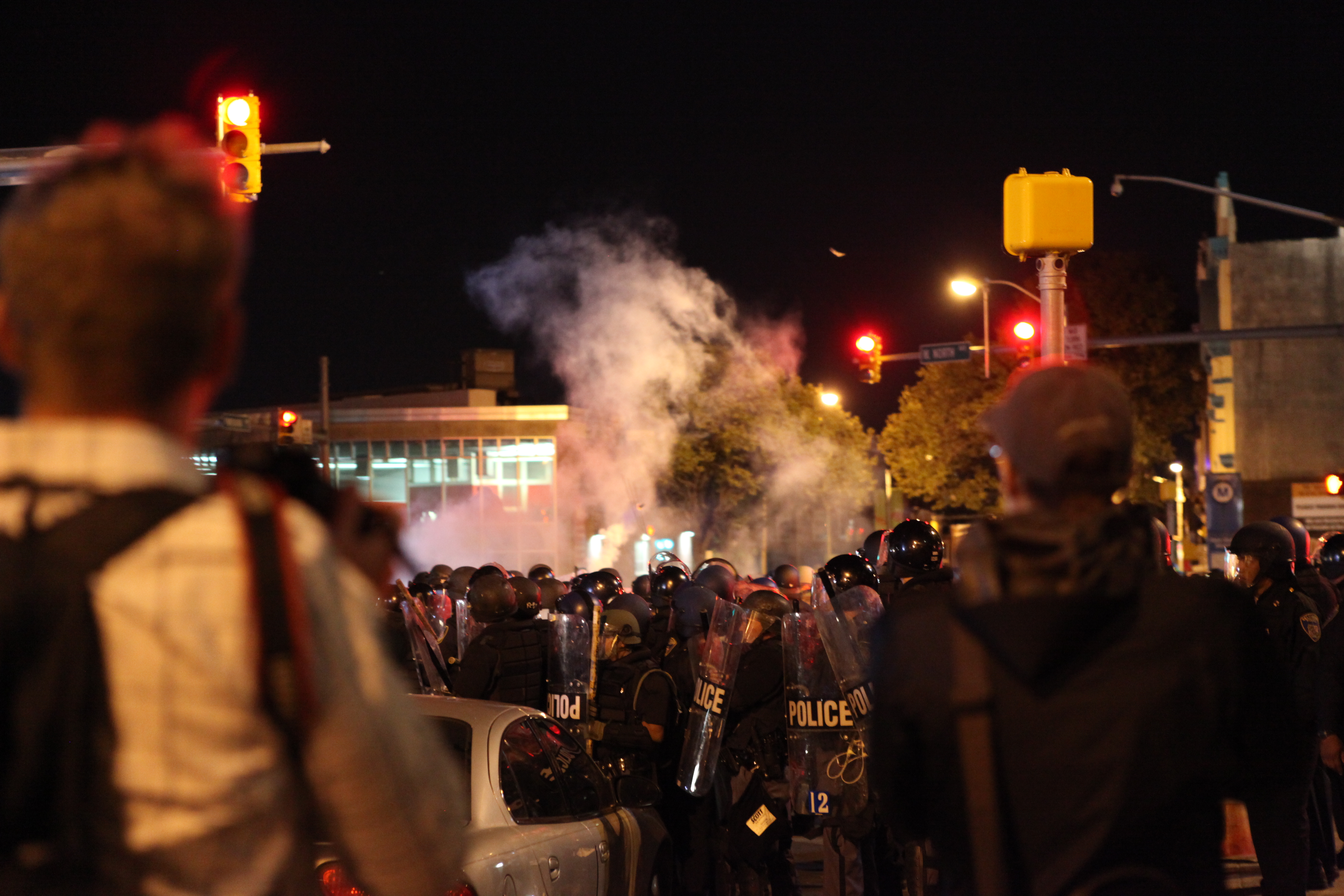Medill National Security Reporting Project
 Medill/GlobalPost investigation sheds new light on $3.2 billion U.S. mine clearance and victim assistance effort.
Medill/GlobalPost investigation sheds new light on $3.2 billion U.S. mine clearance and victim assistance effort.
→ Visit the project site
→ Read more about the project
 Medill/USA TODAY investigation of U.S. international food aid programs finds significant, entrenched problems
Read about the project.
Medill/USA TODAY investigation of U.S. international food aid programs finds significant, entrenched problems
Read about the project.Like and follow us
R.I.P. James Wright Foley, 1973-2014
#MedillRemembers James Foley, One Year Later
Remembering James Foley's life and legacy one year after his death at the hands of the Islamic State. → Continue to the story.
→ Continue to the story.
→ James Foley: A legacy that lives on (VIDEO)
Major TV networks sign onto freelancer safety compact
Read about the compact, which was signed by Medill NSJI Co-Director Ellen Shearer at Columbia University in September, here.-
Real-time Twitter feed
NSJI in the News
The Voice of America featured NSJI in a recent article about how it prepares journalists to cover stories in conflict zones.McCormick Foundation renews grant for Medill National Security Journalism program
EVANSTON, Ill. — The Robert R. McCormick Foundation has renewed a $1 million grant to fund the Medill National Security Journalism Initiative at Northwestern University over the next two years.

The NSJ program provides journalists-in-training and working journalists with the knowledge and skills necessary to report accurately, completely and with context on events and issues related to defense, security and civil liberties. The initiative began in January, 2009 with an initial three-year, $1.3 million McCormick Foundation grant. The grant was also renewed for $1 million over two years in 2011.
About the initiative
By the Medill National Security Journalism Initiative, in partnership with the McCormick Foundation.Links we recommend
- Campaign for Innocent Victims in Conflict
- Global Warning
- International Reporting Project
- McCormick Foundation
- Medill
- Medill Washington
- Military Reporters & Editors
- Northwestern University
- Security Clearance
- The Center for Public Integrity
- The Crimes of War Projct
- The Dart Center
- Washington Post National Security news
Tag Archives: reporting
#MedillRemembers James Foley, One Year Later
Medill NSJI, MRE and SPJ send letter to Army Secretary
WASHINGTON — Military Reporters and Editors, the Society of Professional Journalists and Northwestern University’s National Security Journalism Initiative sent a joint letter to Army Secretary John McHugh on June 19, requesting the immediate declassification of the investigation into Staff Sgt. Robert Bales’ horrific crimes in Afghanistan in March 2012.
Bales was sentenced to life in prison in August 2013 for murdering 16 Afghan civilians, including many women and children, during two solo nighttime raids in small villages in Kandahar province. The gruesome murders—dubbed the Kandahar massacre—sparked angry protests and forced the U.S. military to temporarily halt combat operations in the region.
“Bales pleaded guilty to his crimes and will spend the rest of his life in prison. His clemency request has been denied and U.S. forces are no longer operating at the combat outposts where he committed his crimes. We see no reason why the investigation should remain classified,” said MRE President Amy McCullough. “The reasons U.S. Central Command gave to some of our members for denying repeated FOIA requests no longer apply, and the public has a right to know if there was anything that could have been done to prevent this tragedy. I sincerely hope Secretary McHugh will do the right thing and declassify this report before his tenure ends.”
“The Pentagon has examined the events leading to Staff Sgt. Robert Bales’ crimes in Kandahar province, but the public has only the military’s word that it has done everything possible to learn from the incidents,” said Ellen Shearer, co-director of Northwestern University’s National Security Journalism Initiative. “The continued lack of transparency in this case is a shameful example of denying the public its right to know the truth about an important, terrible event in the war in Afghanistan.”
The letter reads, as follows:
June 19, 2015
Dear Secretary McHugh,
We write to draw your attention to an important document regarding SSgt. Robert Bales’ crimes in Kandahar province that has been concealed despite his conviction and the historic significance of the atrocities he committed. These obstacles are troubling to Military Reporters and Editors, the Society of Professional Journalists, and Northwestern University’s National Security Journalism Initiative. The gravity of Bales’ crimes argues for transparency in all aspects of his case. We ask you for your assistance in declassifying an Army regulation 15-6 investigation into Bales’ killings before your tenure as Army Secretary ends.
Since Bales’ was sentenced to life in prison in August 2013, three news organizations from the Puget Sound region near JB Lewis-McChord have submitted multiple Freedom of Information Act requests for an Army Regulation 15-6 investigation commissioned to look into whether anything could have been done to prevent Bales’ massacre in March 2012.
The News Tribune of Tacoma, The Seattle Times and NPR Seattle affiliate KUOW have had their FOIA requests denied and their appeals delayed. Normally, investigative documents used during courts-martial may be released through FOIA following the resolution of a case. That has not happened with the Bales 15-6.
U.S. Central Command rejected The News Tribune’s first request for the Bales 15-6 in January 2014. The reasons listed by Central Command included:
- JBLM’s I Corps headquarters had not yet considered Bales’ clemency
- Releasing the 15-6 could jeopardize ongoing operations for frequently deployed
- Releasing the 15-6 could obstruct a law enforcement
- Releasing the 15-6 could impair Bales’ rights to a fair and impartial
The News Tribune filed an appeal to this denial. CENTCOM has not yet considered it. CENTCOM has confirmed that The News Tribune’s appeal is No. 235 in line for further consideration, but has repeated the reasoning it offered to The News Tribune in denying FOIA requests from The Seattle Times and KUOW.
In the 17 months that have passed since CENTCOM’s denial, facts have changed that warrant an immediate reconsideration of CENTCOM’s withholding of the Bales 15-6.
- I Corps Commander Lt. Gen. Stephen Lanza has denied Bales’ clemency request and upheld his sentence.
- S. forces are no longer stationed at combat outposts near where Bales committed his massacre, according to open-source news reports published by the Army. Moreover, testimony at Bales’ court-martial revealed how he twice walked out of his outpost to kill civilians. Releasing more information about that aspect of this incident could do no more harm to U.S. forces than has already been done.
- Bales has been convicted and sentenced to life in prison. There is no pending law enforcement investigation that could be influenced by the release of the 15-6.
- The FOIA exemption that protects a defendant’s right to a fair and impartial hearing is intended to ensure that military juries are unbiased. Bales is past the point when a jury may consider evidence in his case. His fate now rests solely with military appeals
Marine Corps Gen. John Allen commissioned the report just after the massacre. He discussed it in press interviews from Kabul, assuring the public the military would do everything it could to learn from Bales’ killings.
“I will be satisfied when I get the report that we have looked closely at the potential contributing factors that might have permitted this event to have unfolded tragically,” Allen told reporters in March 2012, two weeks after the killings.
Bales committed a terrible crime and is serving his sentence. The public and the press still deserve the answers to the questions Allen aired when he announced the 15-6.
Sincerely,
Amy McCullough, MRE President
News Editor, Air Force MagazineIsaac Cubillos, MRE Vice President
Editor, Military Media GroupOtto Kreisher, MRE Treasurer
Freelance ReporterBryan Bender, MRE Board member
Defense Editor, PoliticoKristina Wong, MRE Board member
Defense Reporter, The HillDan Lamothe, MRE Board member
National Security Reporter, The Washington PostAlex Quade, MRE Board member
Freelance War ReporterGreg Mathieson, MRE Board member
Combat PhotographerJenn Rowell, MRE Board member
Military Reporter, Great Falls (Mont.) TribuneJohn Grady, MRE Board member
Freelance National Security ReporterEllen Shearer, Co-Director National Security Journalism Initiative
Professor, Northwestern University’s Medill School of JournalismDana Neuts, SPJ President
Freelance JournalistPaul Fletcher, SPJ President-Elect
Publisher/Editor-in-Chief, Virginia Lawyers WeeklyKaren Peterson, Executive Editor
The News TribuneKathy Best, Editor
The Seattle TimesPatricia Murphy, Military/Veterans Reporter
KUOW
Tagged Army Secretary, Army Secretary McHugh, journalism, Medill National Security Journalism Initiative, Medill NSJI, Military Reporters & Editors, MRE, open records, reporting, Robert Bales, Robert Bales Afghanistan, Secretary of the Army, Society of Professional Journalists, SPJ, Staff Sergeant Robert Bales, Staff Sgt. Robert Bales, transparency
Fourteen fallen journalists immortalized at Newseum
WASHINGTON—The Newseum honored 14 journalists on June 8 for their courage while reporting under hostile conditions, representing all journalists who died in 2014.
Family members and friends of the fallen attended the museum’s annual Journalists Memorial, which recognizes the risks journalists face in getting the news.
“It has been a brutal time for journalists worldwide. Numbers vary, but according to most international media organizations, more than 80 journalists were killed last year,” said Kathy Gannon, an award-winning Associated Press correspondent who was shot at by an Afghan police officer in April of last year while in a car. Her colleague Anja Niedringhaus died in the attack.
Gannon was the recent recipient of the 2014 James Foley Medal for Courage in Journalism awarded by Northwestern University’s Medill School of Journalism.
After her speech Gannon hugged friends, some were teary-eyed.
John Foley, father of the late James Foley, honored his son and all journalists killed last year.
In his last letter addressed to his family in captivity, James wrote: “I know you are thinking of me and praying for me. And I am so thankful. I feel you all especially when I pray. I pray for you to stay strong and to believe. I really feel I can touch you even in this darkness when I pray.”
Islamic State militants beheaded him in August.
“He left his mark as a wonderful human being,” Foley said. “He defended our right to know.”
Islamic State militants also murdered journalist Steven Sotloff in 2014.
While crossing into Syria from Turkey, Sotloff was abducted by the Islamic State in 2013. He was killed in September, the execution videotaped and released online.
Sotloff’s mother Shirley, accompanied by her husband Arthur, read her son’s handwritten words aloud. The words were also written while Sotloff was taken hostage: “Everyone has two lives. The second one begins when you realize you only have one.”
The 2Lives foundation was created in honor of Sotloff to “support aspiring young journalists,” according to his mother.
Shirley said Sotloff’s dedication to the Newseum’s Journalists Memorial held a special place in the their hearts.
Peter Prichard, chairman and chief executive officer of the Newseum, said that attention should be placed on why the journalists passed instead of how they passed.
“It’s certainly right and just that we pause today in our busy lives to remember what these journalists did and why they did it,” Prichard said. “And it’s also right that we should recognize and honor the family members who have lost their loved ones for what is, in the end, a noble cause.”
A hashtag –#WithoutNews –accompanied Monday’s event, urging news consumers to think about the threats experienced by journalists as they report.
The hashtag also asked individuals to envision a world without news.
Tagged James Foley, Jim Foley, journalism, journalists, Medill, Medill National Security Journalism Initiative, Medill National Security Zone, Medill NSJI, Medill NSZ, Medill School, Medill School of Journalism, National Security Journalism Initiative, National Security Zone, Newseum, NSJI, NSZ, Ramsen Shamon, Ramsen Shamon Medill, reporter, reporters, reporting, Shamon Medill
VIDEO: ‘Reporting Vietnam’ a gritty look at reporting the war
Marking the 50th anniversary of the beginning of the Vietnam War, a new exhibit allows visitors to take a retrospective look at the war’s legacy through the lens of American journalists.
It opened Friday at the Newseum in Washington, D.C.
“With the exhibit,” said Curator Carrie Christoffersen, “we really hope that people will gain the better understanding of how and why journalists did what they did, how they brought coverage of the Vietnam War to a divided nation.”
The exhibit, called “Reporting Vietnam,” showcases historic photos, news footage, newspapers and magazines, evocative music and more than 90 artifacts that characterized the war era.
Challenging perceptions of America’s first televised war, it considers the question, “Did the press lose the war?”
The answer was “no” for Neil Lakdawala, a student at Rutgers University in New Jersey.
“The media was not always just trying to portrait what the government wants,” he said. “I think they did a good deal of work to bring the truth to the light.”
For both Lakdawala and Christoffersen, the highlight of the exhibit was the collection of Larry Burrows, an English photographer known for his pictures of the war.
On display is a helmet found at the site of the 1971 helicopter crash in Laos that killed Burrows and three counterparts.
There also are iconic Pulitzer Prize-winning pictures that symbolized the brutality of the war, such as “Napalm Girl,” which triggered worldwide controversy over the image of a nude, screaming South Vietnamese girl whose clothes and flesh were burned off by napalm.
“What’s a better way to learn about Vietnam and the war than by people who were actually in the war,” Lakdawala said.
The exhibit, accompanied by the screening of an original documentary chronicling the war’s key moments, continues through mid-September.
Tagged 50th anniversary Vietnam War, Andersen Xia, combat journalism, combat reporting, defense, defense journalism, defense reporting, history, journalist, journalists, Medill, Medill D.C., Medill DC, Medill National Security Journalism Initiative, Medill National Security Zone, Medill NSJI, Medill NSZ, Medill School, Medill School of Journalism, Medill Washington, military, military journalism, military reporting, national security, National Security Journalism Initiative, National Security Zone, Newseum, NSJI, NSZ, reporter, reporters, reporting, video, video journalism, Vietnam War, Vietnam War anniversary, Weicong Xia
Guard operations center advises troops in Baltimore

BALTIMORE — As the third night of Baltimore’s curfew set in on Thursday, the Maryland National Guard stood watch over an empty City Hall. Their real action, however, took place 31 miles away at the Joint Operations Command in Adelphi, Maryland.
There, Joint Task Force Maryland had gone online to guide all National Guard operations in the state.
At 11:00 a.m. on Tuesday, the makeshift operations center was activated in a converted gymnasium at the Maryland National Guard Center to coordinate the approximately 2,000 soldiers streaming into the city from across Maryland, explained Capt. Patrick Elliot, who oversees day operations at the JOC.
In an interview Thursday evening, Elliot described JTF Maryland’s role in responding to the civil unrest in Baltimore.
“Anytime civilian assets are unable to address a problem, they call us in,” Elliot said. “Our job is to respond to and direct all Army assets in the state of Maryland.”
On Monday evening, the Maryland National Guard received Gov. Larry Hogan’s call to assist city and state police in responding to the violent protests that engulfed Baltimore after the death of Freddie Gray.
“We rehearse this every year, if not every couple months, on top of all the other Army [training] requirements” Elliott said. “I think it shows in the quick response that we were able to put on the ground to support the governor.”
The JOC, staffed by the 58th Troop Command, receives missions from the Maryland State Police through liaison officers to provide resources the police lack, logistical or transportation support and requests for extra forces to bolster security throughout Baltimore.
“In this type of sustained operations, there’s a lot that happens behind the scenes in order to support the troops that are out there,” Elliot said.
The mission has thus far proved successful, according to Elliot. The JOC has been able to provide continuous guidance on how to respond to conflict, how and when to use force, and what are appropriate escalation and de-escalation tactics.
“As a troop on the ground, it’s good to know that at the end of the day, you’re helping to protect the community,” Elliot said.
“The soldiers know that they’re protecting lives and property in Baltimore.”
Tagged Baltimore, Baltimore City Police Department, Baltimore PD, Baltimore police, Baltimore police department, Baltimore riots, demonstration, demonstrations, Freddie Gray, Freddy Gray, how to cover Baltimore, how to report in Baltimore, journalism, journalism resources, journalist, journalists, law enforcement, Maryland Army National Guard, Maryland National Guard, Medill National Security Journalism Initiative, Medill National Security Zone, Medill NSJI, Medill NSZ, Medill School, Medill School of Journalism, military, National Guard, national security, National Security Journalism Initiative, national security reporting, national security reporting resources, National Security Zone, NSJI, NSZ, police accountability, police brutality, protest, protests, reporter, reporters, reporting, reporting resources, riot, riots, state troopers, tips for journalists, tips for reporters, unrest
Advice from journalists covering the Freddie Gray fallout in Baltimore
Reporters, photographers and other journalists rarely receive formal training on how to cover urban protests and demonstrations. Usually they rely on the collected wisdom of colleagues who have had earlier experiences, some as recent as last year’s tension and violence in Ferguson, Missouri.
Now with the current demonstrations and violent protests in Baltimore following the death in police custody of 25-year-old Freddie Gray, another collection of journalists, young and old, is witnessing and learning what it means to cover unrest in one of the nation’s larger cities.
The lessons can be hard, the anxiety high and the consequences fearsome, so I went cautiously into the fray of Baltimore neighborhoods Tuesday to get a feel for the situation awaiting journalists on the ground and to gather reporting advice from veteran journalists, along with cautionary tips from military and community leaders. I was joined by Medill reporters Matt Schehl, Beth Lawrence and Zachary Vasile, who were also covering the tensions.
Here are some thoughts based on our observations and interviews that will help navigate reporting on often-violent street protests that can be as confusing as they are dangerous.
1. Don’t go it alone.
While flaming police cars and flying bricks tend to be the exception rather than the rule when it comes to covering protests, the whole “safety in numbers” maxim still applies.
The ability to operate across a variety of media is all well and good, but when time is of the essence and deadline is nearing, picking a niche at which you can excel can make the difference between a good story and a great one.
If you are a print journalist, it helps to be paired with a photographer. If you work in video, it helps to have a sound person. Regardless of how you mix-and-match your group’s components, having two (or more) players on your reporting team will increase your level of safety, help you fact-check details observed on the ground and allow you to focus wholly on your work within a single reporting medium versus trying to be a one-man band.
It’s also vital to set a rallying point before the start of an event – and especially a demonstration – where your reporting team can meet if anything goes awry. That way, even if your phone chargers die and you get separated in a large crowd, you can use that landmark as a point of reference for the sake of safety.
“Have a buddy and know where you parked your car,” says Reuters News Agency video producer Zachary Goelman.
2. Realize that the media is not a welcomed guest by everyone in the Baltimore community.
Two negative schools of thought regarding the media are gaining traction there.
The first is that the media has no place at peaceful demonstrations because it is sensationalism-obsessed, and, so, citizens assume that we’ll be disappointed unless we have a riot to show for our attendance and, therefore, we tend to tell unbalanced stories.
The second is that the media’s mere presence at demonstrations exacerbates tensions between civilians and law enforcement and essentially eggs the latter on, so an absence of media would result in increased peace between cops and the community.
While both of these points are worth considering, they also put journalists at risk of bodily harm or other types of harassment. It’s important to realize that clear communication can help build the missing trust.
Introduce yourself and your organization. Be open to hearing out subjects’ perspectives and building a story around them vs. trying to illicit responses that fit within a predetermined angle. Above all, treat your story subjects with respect and courtesy, and treat each introduction and interview as a human – rather than a business – transaction.
3. Understand preexisting biases.
Recognize that racial tension is high and many people may be reluctant to speak with reporters of any color. In the eyes of many local citizens, the Freddie Gray case is as much about race as it is about law-enforcement accountability.
4. Bring (or rent) a car.
You cannot rely on just Baltimore’s public transit system, the geography of the Freddie Gray story is wide and its major flash points may change quickly. Hopping in a car is much more time-efficient on deadline. If you’re car-less or can’t afford a rental, Uber is the next best thing. Wait times on Tuesday tended to be in the 3-5 minute range, and we didn’t pay more than $10 to get anywhere.
5. Pack the right equipment.
On Tuesday evening, the police-press dynamic at the protest around the intersection of West North and Pennsylvania avenues in Baltimore became very hostile, very quickly. Tear gas and smoke both came into play, in addition to projectiles being tossed by protestors at cops.
I didn’t bring a helmet, but I did bring a painter’s respirator (~$30 at Home Depot) just in case. I thought I was being paranoid, but soon as smoke appeared at Tuesday night’s protest and then saw other journalists donning gas masks and respirators of their own, I was glad I did.
Jeff Abell, a journalist with Baltimore Fox affiliate WBFF TV, advises journalists to keep a safe, reasonable distance from tear gas when it is deployed because the wind can carry the chemical your way even if you aren’t the intended target.
“If you’re out of sight, you’re gonna be out of mind,” he says.
Goelman, the video producer from Reuters, suggested packing “a bicycle helmet if you have it, a respirator if you can find one, some sort of eye protection” and “clothes you don’t mind donating” in addition to your normal reporting equipment.
And on a tech note, bring backup power for your backup power. Portable power sources run from about $5 (~one full smartphone charge, but not necessarily as powerful after the first go round) to $40 (~3 full smartphone charges and a bit sturdier), and are necessary investments for anyone heading out to Baltimore.
Unless your news organization gives you a generator to bring with you, there are zero places to plug in on the street. While coffee shops can be good options under regular circumstances, nearly every single local business we came across was closing before sunset in order to ensure the safety of its employees in the midst of the demonstrations.
“I would pack as many chargers as you have as possible because you will go through all of them,” Abell says. “Be sure you have some power supply because it doesn’t matter, you know, how much you think you have — everybody’s been running out and trying to plug in wherever you can see a plug.”
Portable wi-fi is also a must, since the citywide curfew means that all businesses have to be shuttered by 10 p.m. and cellular signals have been markedly slow within Baltimore.
6. Don’t assume that rules automatically will apply to you.
The Baltimore Police Department tweeted out a clarification message for journalists about the citywide curfew that took effect Tuesday.
Credentialed members of the MEDIA are exempt from the emergency curfew. Please use caution in the area of police enforcement.
— Baltimore Police (@BaltimorePolice) April 29, 2015
According to the message, anyone with credentials was exempt from the curfew.
However, during Tuesday’s protest, police in helicopters above the crowd and surrounding buildings repeatedly instructed members of the media to disperse or else risk arrest. Additionally, the Baltimore mayor showed up to personally urge journalists and protestors, alike, to go home prior to the curfew.
These warnings, combined with the threat of arrest against journalists who remained after the 10 p.m. cutoff, suggests that the curfew’s implementation is dynamic in practice. For this reason, we’d suggest any journalists covering demonstrations with a police presence to exercise an abundance of caution.
7. If you’re traveling with a camera, don’t stick it in anyone’s face without permission.
This should go without saying, but increasing tensions have resulted in increasing assaults on journalists within city limits – including equipment theft and physical assault – so no interview is worth testing the limits of the community’s patience.
8. Show up early and leave late.
Reporting days in Baltimore go by fast, so getting local by late morning or early afternoon will give you more time to scope out interviews with locals, arrange meetings with community leaders and more.
On the flipside, leaving late – especially from protests – can give you a feel for the police-civilian dynamics at play in communities or just give you an opportunity to follow up with someone whose perspective piqued your interest during an event.
“I would treat this as a story that moves on its own rather than one you can move in,” says Reuters’s Goelman. “I would rely on the media and the press relations office of the law enforcement institutions. Follow them on Twitter.”
9. Talk to the people in uniform.
On Tuesday, the Maryland National Guard, Maryland state troopers and Baltimore city police were scattered throughout the city in an attempt to maintain order. The average cop was carrying a gun, zip ties, a nightstick and a Taser gun, while military members were fully suited up and armed. While the equipment may look forbidding, it’s important to understand how law enforcement communication systems work.
Individual police officers usually are discouraged from speaking to the press, but members of the media can direct press requests for everything from interviews to ride-alongs to the department’s Public Information Officer, or PIO. From there, the PIO can route your request down the proper parts of the bureaucratic pipeline, and no one risks getting fired for talking to you.
Maryland National Guard Staff Sergeant Michael Davis, a Public Affairs Officer (PAO), said soldiers are generally briefed on what they are and aren’t allowed to discuss, so any soldier should, theoretically, be approachable by the public. However, he said, the standard practice is first to make a request of a military division’s PAO, but there won’t necessarily be a PAO with every group of National Guard soldiers.
“Most soldiers know what to say, what not to say,” Davis explained. “We’re not gonna give specifics about our mission [or] put ourselves in harm.”
According to Maryland National Guard Sergeant Adam Safley, soldiers are trained to know where to direct journalists to get the information they need. “If we can’t give you the answer, we’ll help you find the person that can give you the answer,” Safley says.
10. Realize that there is life (and news) after protests.
Media briefings with the mayor and police, prayer vigils and civic-action meetings are just a handful of entry points journalists could cover to expand the Baltimore dialogue past protests. The current controversy began with an arrest, injury and loss of life, so examining the systems at play in these respective stages of the Freddie Gray story – as well as the long-term impact of his death on his neighborhood and the greater Baltimore area – is crucial to telling it responsibly.
Hear what Deacon Kevin Underdue Sr., a Baltimore preacher, has to say on the subject:
Tagged Baltimore, Baltimore City Police Department, Baltimore PD, Baltimore police, Baltimore police department, Baltimore riots, demonstration, demonstrations, Freddie Gray, Freddy Gray, how to cover Baltimore, how to report in Baltimore, Jennifer-Leigh Oprihory, journalism, journalism resources, journalist, journalists, law enforcement, Maryland Army National Guard, Maryland National Guard, Medill National Security Journalism Initiative, Medill National Security Zone, Medill NSJI, Medill NSZ, Medill School, Medill School of Journalism, military, National Guard, national security, National Security Journalism Initiative, national security reporting, national security reporting resources, National Security Zone, NSJI, NSZ, police accountability, police brutality, protest, protests, reporter, reporters, reporting, reporting resources, riot, riots, state troopers, tips for journalists, tips for reporters, unrest
Understanding the Islamic State: A Medill NSJI Event
WASHINGTON – The Medill National Security Journalism Initiative will host “Understanding the Islamic State,” a lunch and panel discussion featuring National War College Professors of Strategy & Policy Dr. Omer Taspinar and Dr. Richard B. Andres, at the National Press Club on Monday, April 6 at 12:15 p.m.
The event is aimed at increasing the media’s knowledge of the Islamic State terrorist group. Taspinar is a leading expert on Islamic radicalization and the author of two books: “Political Islam and Kurdish Nationalism in Turkey” and “Fighting Radicalism with Human Development: Education, Employment, and Freedom in the Islamic World.” Andres is a former Defense Department official who specialized in defense planning, especially related to Iraq and Afghanistan. Dr. Andres is also a leading thinker on the role of cyber across the national security realm.
The February story of four teenage girls leaving Britain to join the Islamic State in Syria caught the world unaware but they were not unique. Young men and women have been joining ISIS, apparently after significant exposure to its message on social media. Andres and Taspinar are experts who will help the audience understand how this is developing. They will focus on how the Islamic radical movement in 2015 is using technology to appeal to youth to uproot themselves from relatively secure environments to join a radical movement in a distant land full of conflict.
Lunch will be served, but reservations are required.
The Medill National Security Journalism Initiative, begun in January 2009 with the support of the Robert R. McCormick Foundation, offers a sequence of courses that equip graduate and
undergraduate journalism students with the knowledge and skills to report on national security issues, undertakes an annual student investigative project with a media partner and sponsors an annual conference for journalists featuring briefings on the most pressing national security issues. It also provides training and background materials on nationalsecurityzone.org as well as webinars for working reporters around the country.
The National War College, founded in 1946, educates future leaders of the armed forces, State Department and other civilian agencies for high-level policy, command and staff responsibilities. The national security policy curriculum emphasizes the joint, interagency, and the multinational perspectives. NWC is located on Fort Lesley J. McNair in Washington.
TO RSVP OR FOR QUESTIONS, PLEASE CONTACT TIFFANY K. ROBERTS BY PHONE AT (202) 661-0107 OR VIA EMAIL AT TIFFANY.ROBERTS@NORTHWESTERN.EDU.
Tagged Andres, Dr. Omer Taspinar, Dr. Richard B. Andres, event, free, Iraq, IS, ISIS, Islamic State, journalism, journalist, journalists, lunch, Medill, Medill National Security Journalism Initiative, Medill NSJI, Medill School, Medill School of Journalism, Medill Washington, Middle East, National Press Club, National Security Journalism Initiative, National War College, NPC, NSJI, NWC, Omer Taspinar, reporters, reporting, Richard B. Andres, syria, Taspinar, Understanding the Islamic State

